Abstract
1. Vasomotion, a phenomen frequently observed in skeletal muscle microcirculation, has been observed under physiological conditions and found enhanced during critical reduction of tissue perfusion due to hypoxic hypoxia, haemorrhage and local hypotension. We used a computer assisted non-invasive plethysmographic method to investigate periodic changes of limb volume (volumotion), which we previously found in critically ill patients. The current study was designed to investigate the origin of volumotion. 2. Simultaneous recordings of limb circumference of both calves were obtained. In patients with peripheral vascular disease and patients with minor surgery the cross-correlation with spontaneous breathing was investigated. In patients who had undergone major abdominal or vascular surgery we analysed for cross-correlations between MSG plethysmography signals of both legs and changes in central venous, arterial and ventilation pressures. In this group the effects of positive-pressure ventilation and positive end-expiratory pressure (PEEP) were also studied. 3. No ventilation-related volumotion was observed during spontaneous breathing. During positive-pressure ventilation a ventilation-related peak was found in the Fourier transform in agreement with the ventilation frequency applied. The amplitude of ventilation-related volumotion decreased significantly after a pressure cuff applied to the thigh was inflated above central venous pressure. We observed a significant increase in the amplitude of ventilation-related volumotion when PEEP was applied. 4. Ventilation-related volumotion showed significant cross-correlation between both legs. Slow wave volumotion (0.5-7 cycles min-1) was frequently observed, but always appeared unilaterally. Whilst we looked for correlations between slow wave volumotion and changes in central venous pressure and arterial blood pressure, respectively, significant cross-correlation with the MSG plethysmography recordings was only observed at the frequency of the positive-pressure ventilation. 5. The fact that periodic changes of limb circumference matching the frequency of the positive-pressure ventilation were detectable with the MSG plethysmography system demonstrates that small volume changes (less than 0.02 ml (100 ml tissue)-1) can be assessed using this system. As slow wave volumotion was observed unilaterally and revealed no correlation either with breathing, ventilation or arterial and central venous pressure, we suggest that slow wave volumotion is a local event most likely reflecting arteriolar vasomotion.
Full text
PDF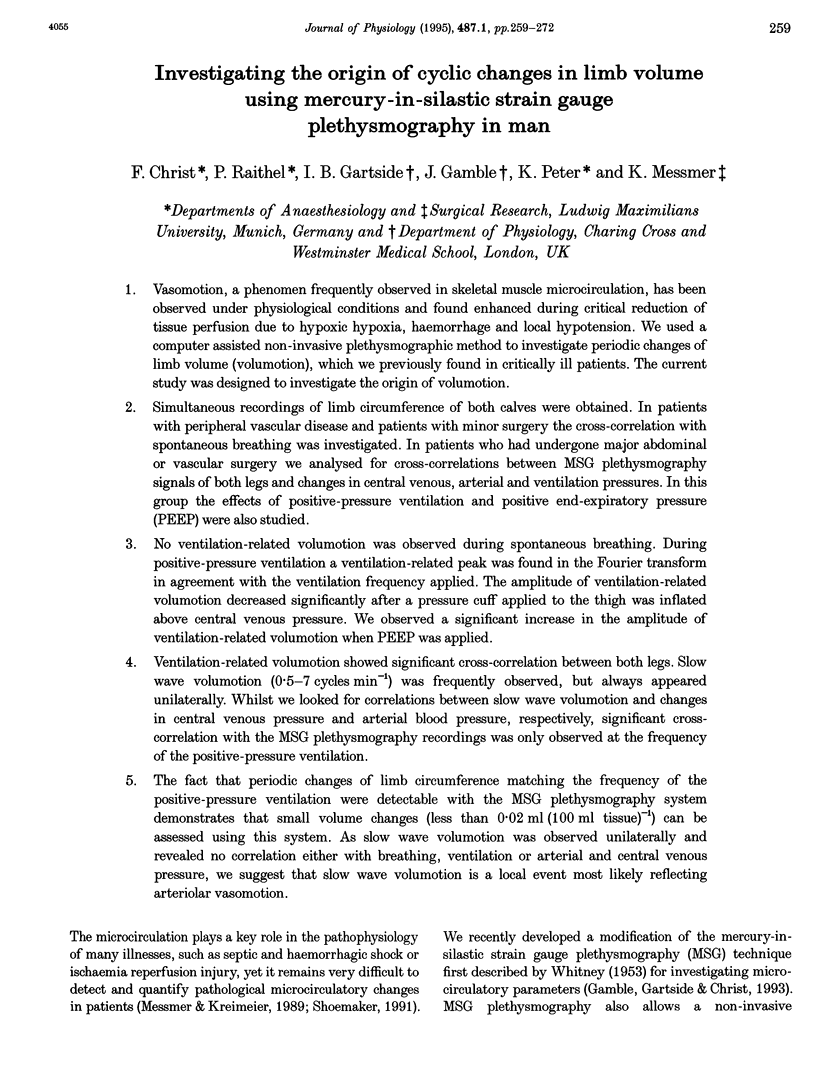
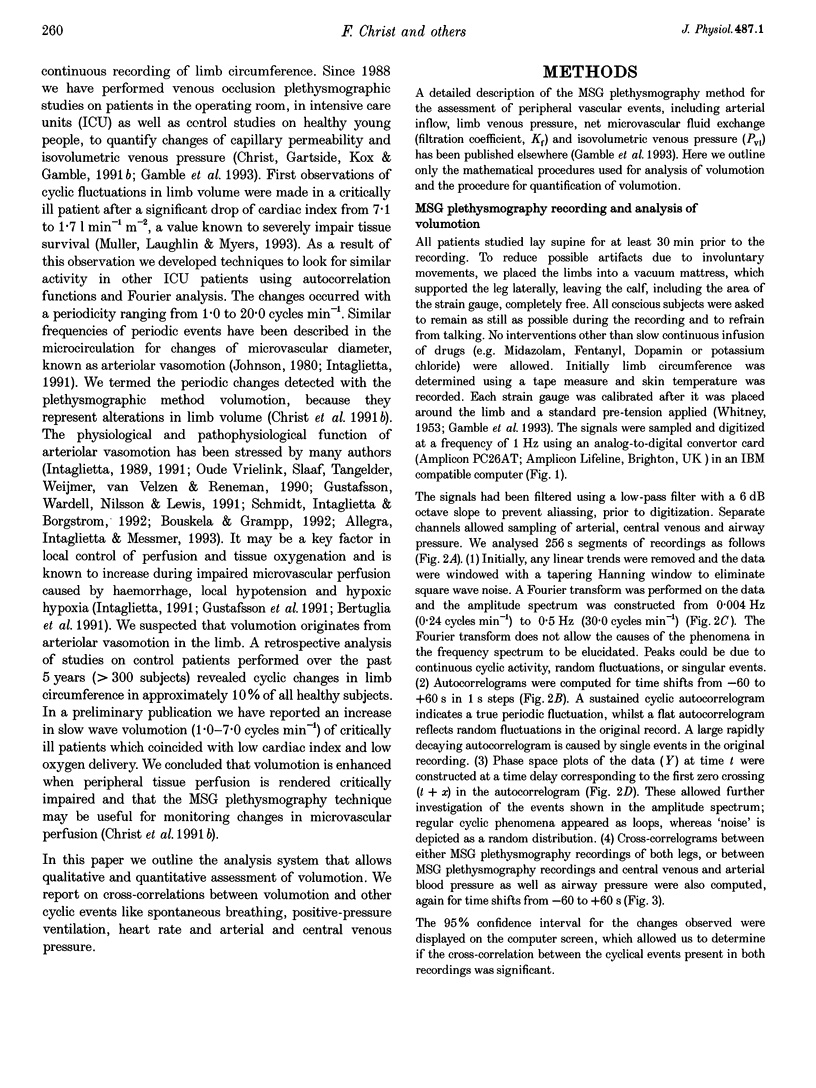
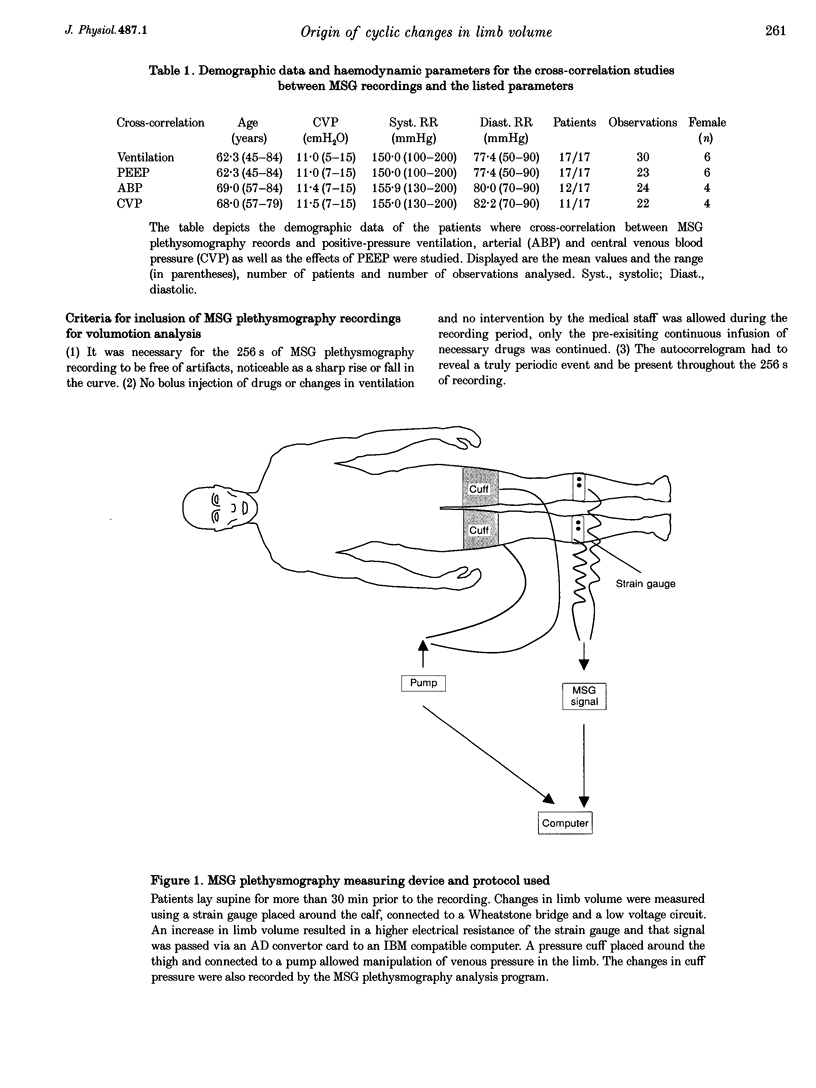
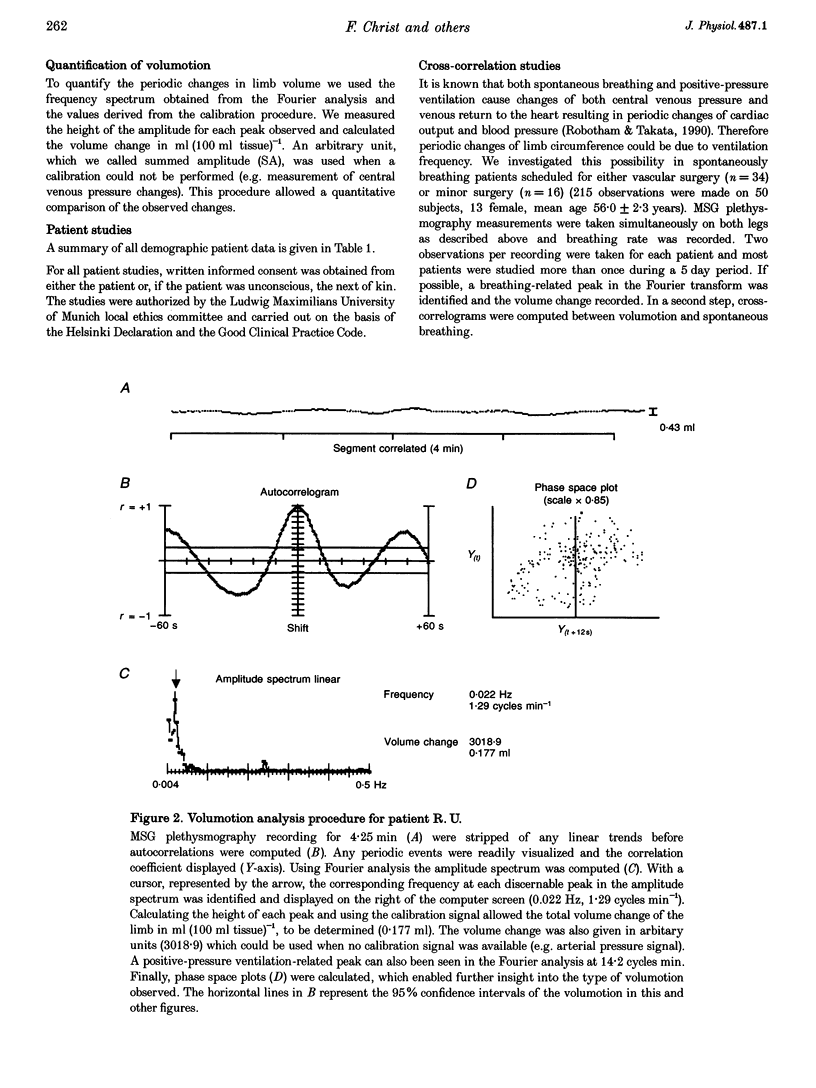
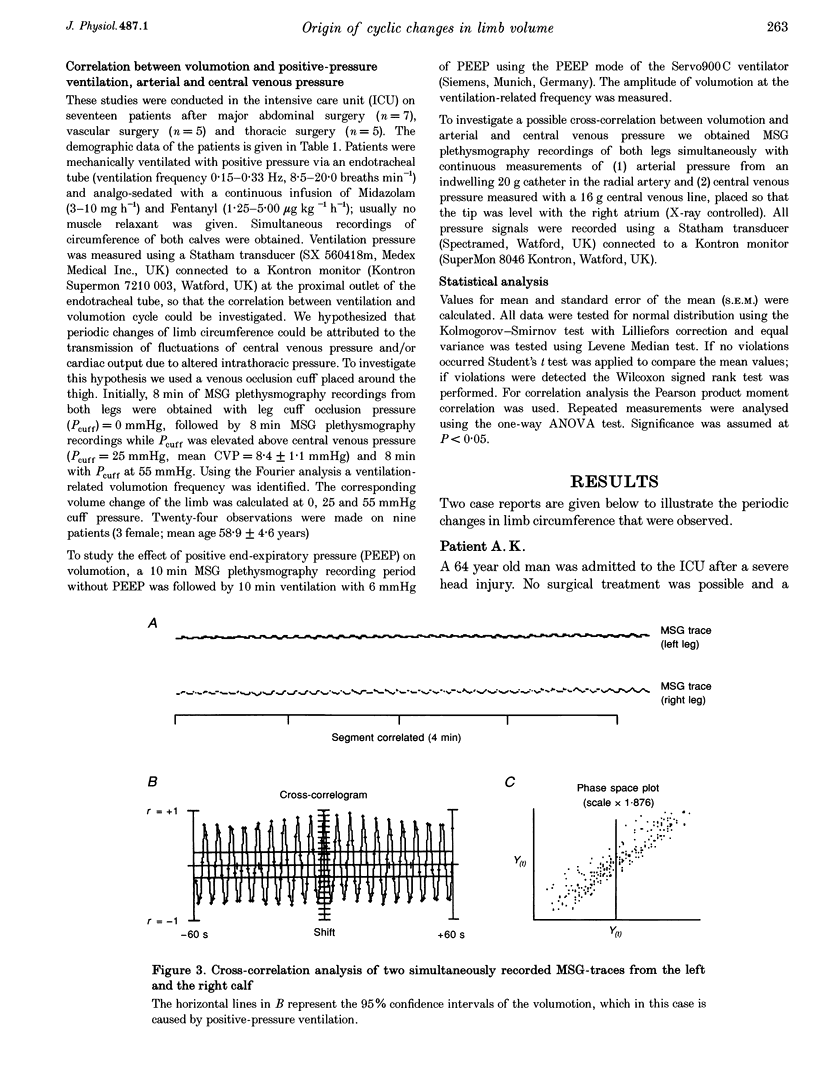
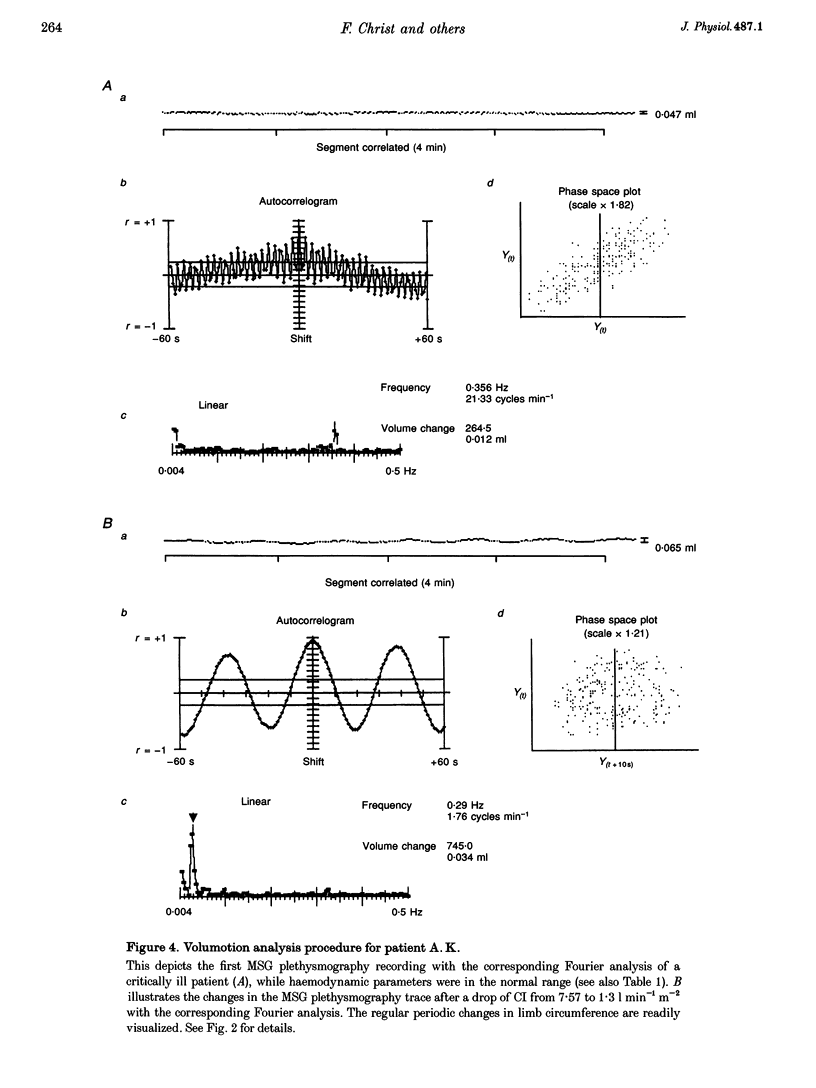
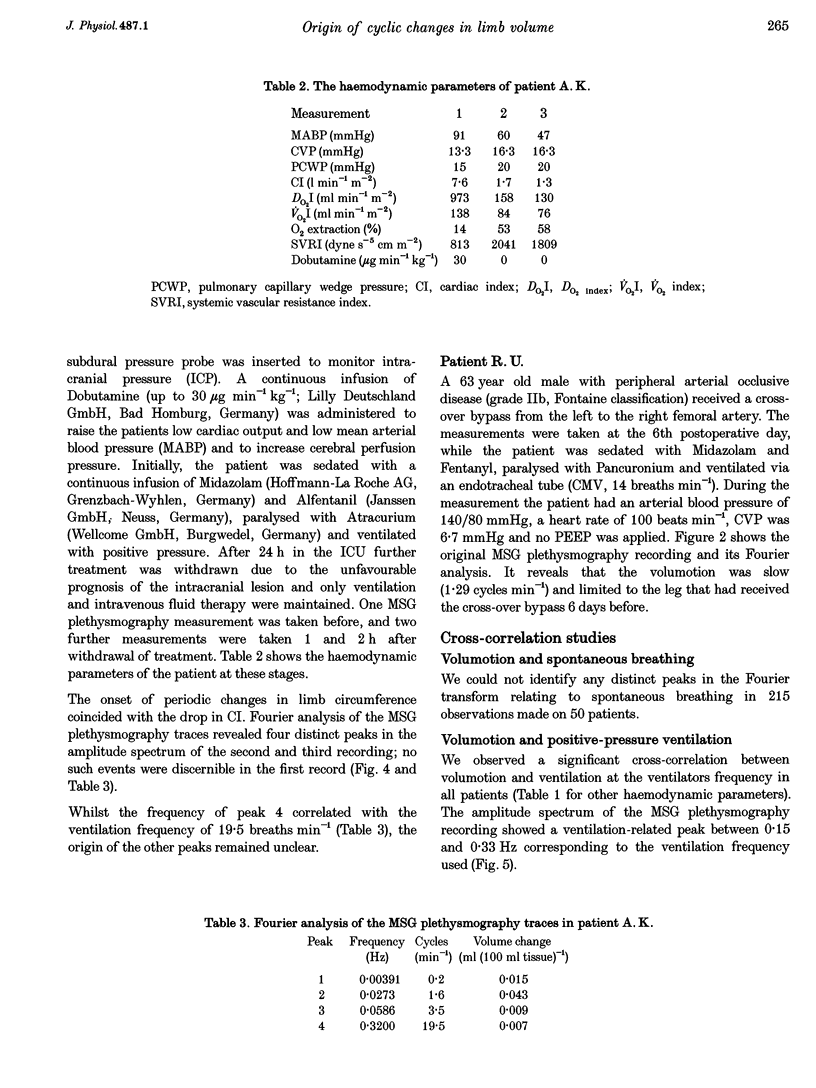
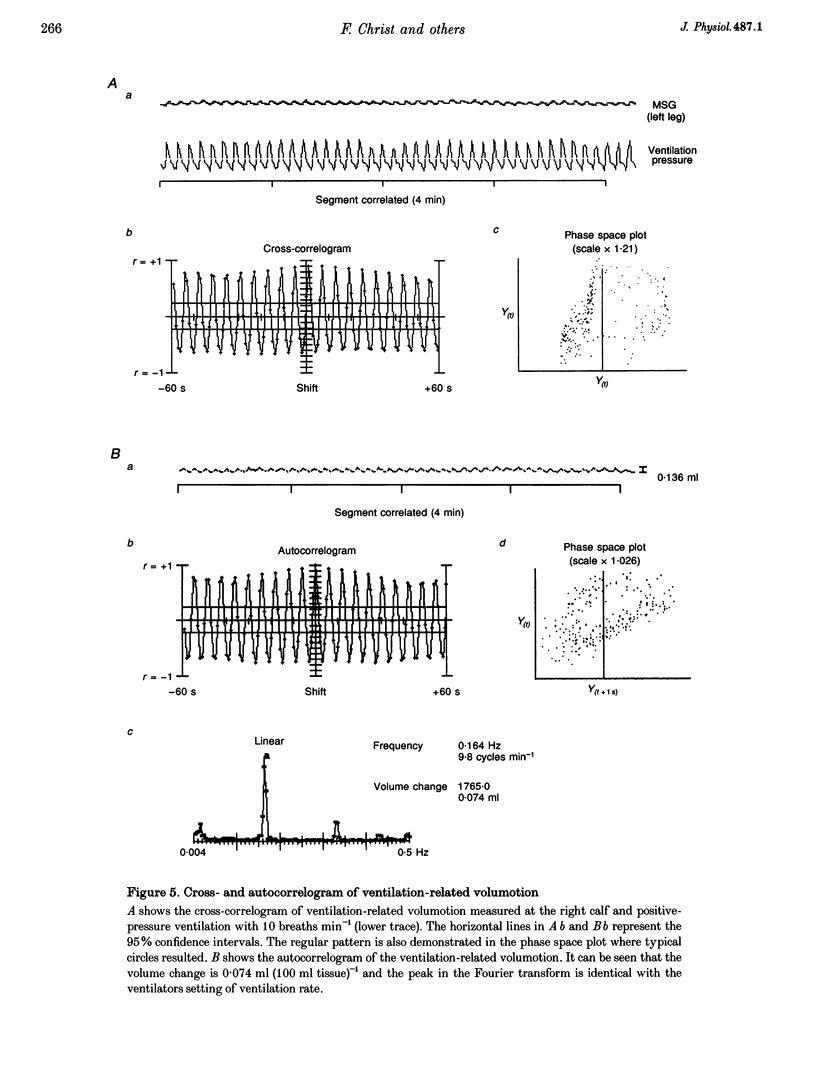
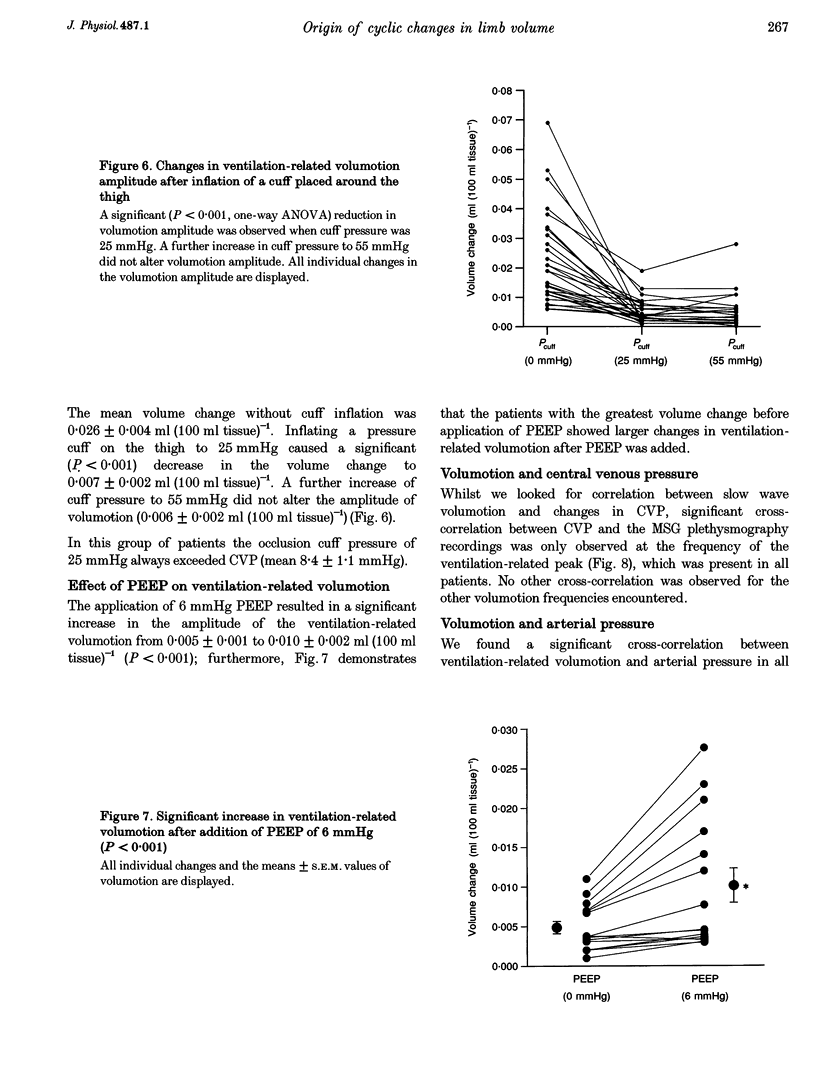
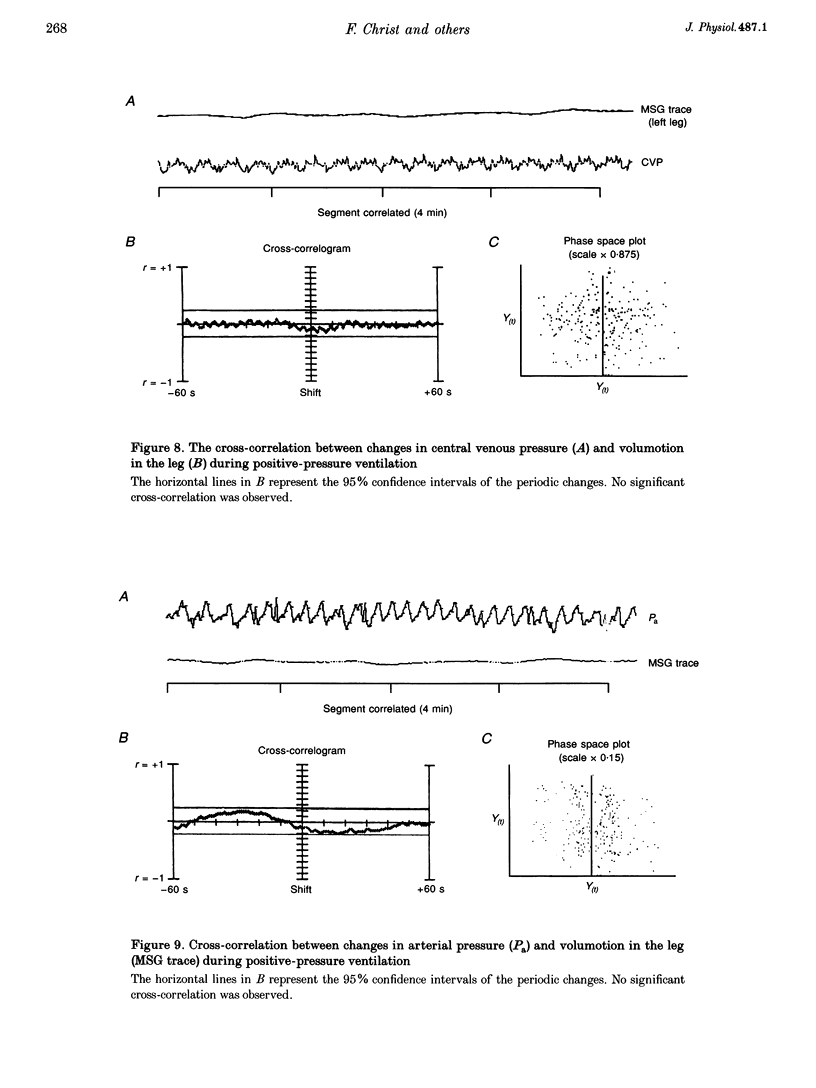

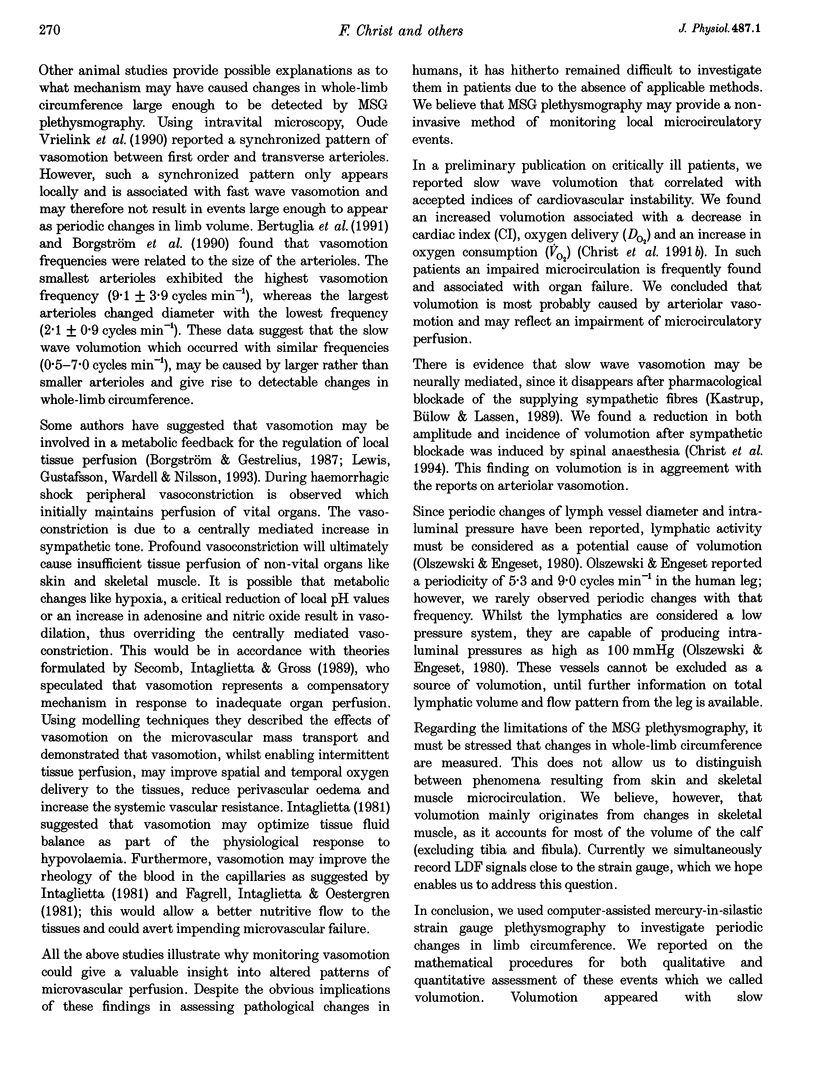
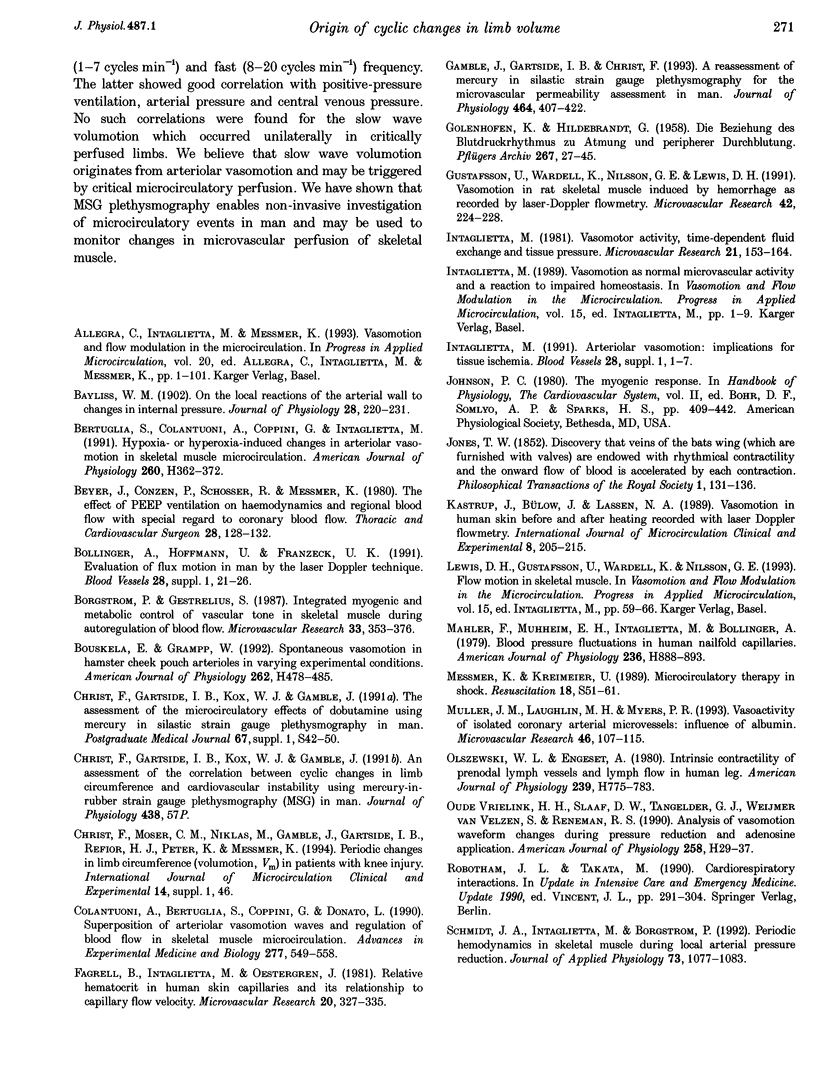
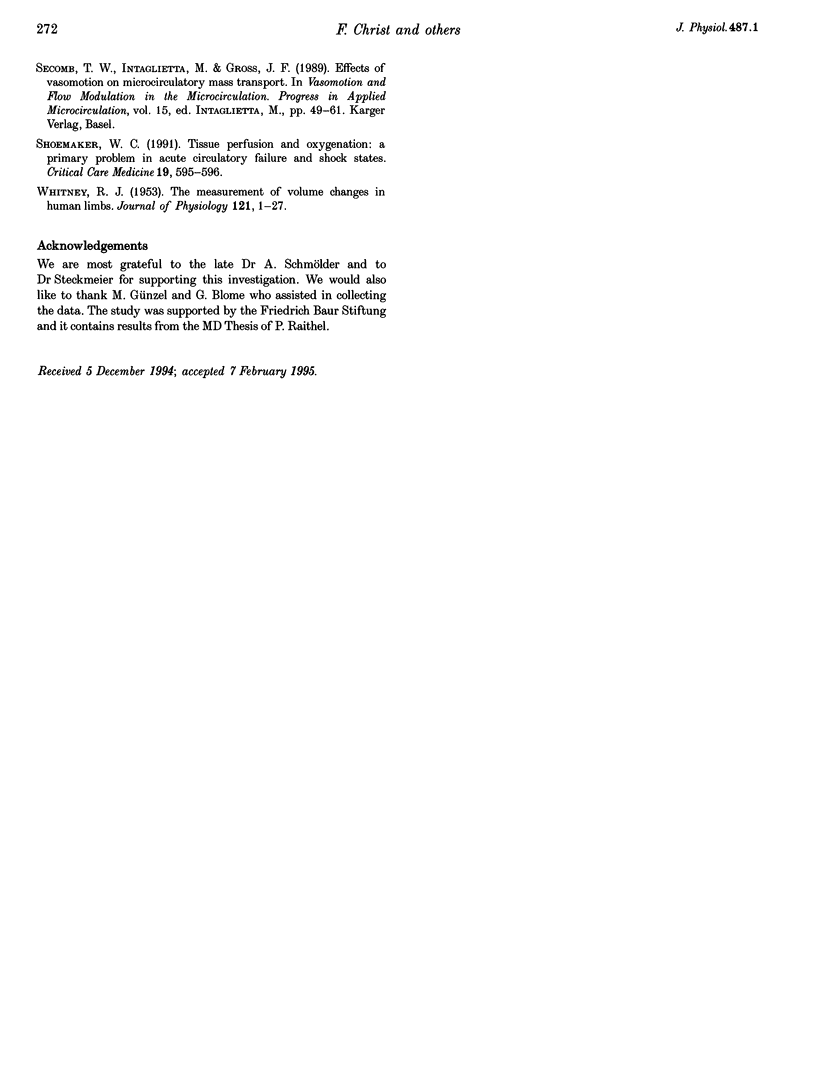
Images in this article
Selected References
These references are in PubMed. This may not be the complete list of references from this article.
- Bayliss W. M. On the local reactions of the arterial wall to changes of internal pressure. J Physiol. 1902 May 28;28(3):220–231. doi: 10.1113/jphysiol.1902.sp000911. [DOI] [PMC free article] [PubMed] [Google Scholar]
- Bertuglia S., Colantuoni A., Coppini G., Intaglietta M. Hypoxia- or hyperoxia-induced changes in arteriolar vasomotion in skeletal muscle microcirculation. Am J Physiol. 1991 Feb;260(2 Pt 2):H362–H372. doi: 10.1152/ajpheart.1991.260.2.H362. [DOI] [PubMed] [Google Scholar]
- Beyer J., Conzen P., Schosser R., Messmer K. The effect of PEEP ventilation on hemodynamics and regional blood flow with special regard to coronary blood flow. Thorac Cardiovasc Surg. 1980 Apr;28(2):128–132. doi: 10.1055/s-2007-1022063. [DOI] [PubMed] [Google Scholar]
- Bollinger A., Hoffmann U., Franzeck U. K. Evaluation of flux motion in man by the laser Doppler technique. Blood Vessels. 1991;28 (Suppl 1):21–26. doi: 10.1159/000158916. [DOI] [PubMed] [Google Scholar]
- Borgström P., Gestrelius S. Integrated myogenic and metabolic control of vascular tone in skeletal muscle during autoregulation of blood flow. Microvasc Res. 1987 May;33(3):353–376. doi: 10.1016/0026-2862(87)90028-8. [DOI] [PubMed] [Google Scholar]
- Bouskela E., Grampp W. Spontaneous vasomotion in hamster cheek pouch arterioles in varying experimental conditions. Am J Physiol. 1992 Feb;262(2 Pt 2):H478–H485. doi: 10.1152/ajpheart.1992.262.2.H478. [DOI] [PubMed] [Google Scholar]
- Colantuoni A., Bertuglia S., Coppini G., Donato L. Superposition of arteriolar vasomotion waves and regulation of blood flow in skeletal muscle microcirculation. Adv Exp Med Biol. 1990;277:549–558. doi: 10.1007/978-1-4684-8181-5_62. [DOI] [PubMed] [Google Scholar]
- Fagrell B., Intaglietta M., Ostergren J. Relative hematocrit in human skin capillaries and its relation to capillary blood flow velocity. Microvasc Res. 1980 Nov;20(3):327–335. doi: 10.1016/0026-2862(80)90033-3. [DOI] [PubMed] [Google Scholar]
- GOLENHOFEN K., HILDEBRANDT G. Die Beziehungen des Blutdruckrhythmus zu Atmung und peripherer Durchblutung. Pflugers Arch. 1958;267(1):27–45. doi: 10.1007/BF00362244. [DOI] [PubMed] [Google Scholar]
- Gamble J., Gartside I. B., Christ F. A reassessment of mercury in silastic strain gauge plethysmography for microvascular permeability assessment in man. J Physiol. 1993 May;464:407–422. doi: 10.1113/jphysiol.1993.sp019642. [DOI] [PMC free article] [PubMed] [Google Scholar]
- Gustafsson U., Wårdell K., Nilsson G. E., Lewis D. H. Vasomotion in rat skeletal muscle induced by hemorrhage as recorded by laser-Doppler flowmetry. Microvasc Res. 1991 Sep;42(2):224–228. doi: 10.1016/0026-2862(91)90090-x. [DOI] [PubMed] [Google Scholar]
- Intaglietta M. Vasomotor activity, time-dependent fluid exchange and tissue pressure. Microvasc Res. 1981 Mar;21(2):153–164. doi: 10.1016/0026-2862(81)90028-5. [DOI] [PubMed] [Google Scholar]
- Kastrup J., Bülow J., Lassen N. A. Vasomotion in human skin before and after local heating recorded with laser Doppler flowmetry. A method for induction of vasomotion. Int J Microcirc Clin Exp. 1989 Apr;8(2):205–215. [PubMed] [Google Scholar]
- Mahler F., Muheim M. H., Intaglietta M., Bollinger A., Anliker M. Blood pressure fluctuations in human nailfold capillaries. Am J Physiol. 1979 Jun;236(6):H888–H893. doi: 10.1152/ajpheart.1979.236.6.H888. [DOI] [PubMed] [Google Scholar]
- Muller J. M., Laughlin M. H., Myers P. R. Vasoactivity of isolated coronary arterial microvessels: influence of albumin. Microvasc Res. 1993 Sep;46(2):107–115. doi: 10.1006/mvre.1993.1039. [DOI] [PubMed] [Google Scholar]
- Olszewski W. L., Engeset A. Intrinsic contractility of prenodal lymph vessels and lymph flow in human leg. Am J Physiol. 1980 Dec;239(6):H775–H783. doi: 10.1152/ajpheart.1980.239.6.H775. [DOI] [PubMed] [Google Scholar]
- Oude Vrielink H. H., Slaaf D. W., Tangelder G. J., Weijmer-Van Velzen S., Reneman R. S. Analysis of vasomotion waveform changes during pressure reduction and adenosine application. Am J Physiol. 1990 Jan;258(1 Pt 2):H29–H37. doi: 10.1152/ajpheart.1990.258.1.H29. [DOI] [PubMed] [Google Scholar]
- Schmidt J. A., Intaglietta M., Borgström P. Periodic hemodynamics in skeletal muscle during local arterial pressure reduction. J Appl Physiol (1985) 1992 Sep;73(3):1077–1083. doi: 10.1152/jappl.1992.73.3.1077. [DOI] [PubMed] [Google Scholar]
- Shoemaker W. C. Tissue perfusion and oxygenation: a primary problem in acute circulatory failure and shock states. Crit Care Med. 1991 May;19(5):595–596. [PubMed] [Google Scholar]
- WHITNEY R. J. The measurement of volume changes in human limbs. J Physiol. 1953 Jul;121(1):1–27. doi: 10.1113/jphysiol.1953.sp004926. [DOI] [PMC free article] [PubMed] [Google Scholar]



